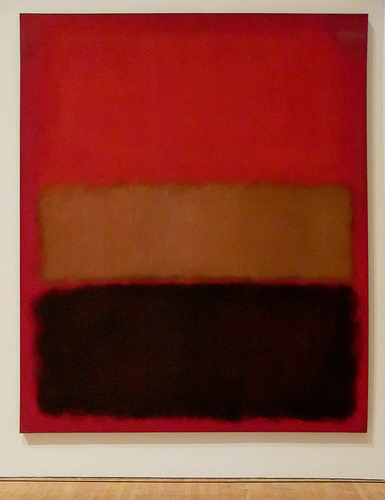Very few works of art grab viewers on a gut level the way Mark Rothko’s paintings do. There isn’t anything quite like the experience of standing in front of a Rothko painting and feeling just what the artist intended you to feel. Rothko famously said, “I’m interested in expressing big emotions – tragedy, ecstasy, doom,” and that is precisely what he does with large rectangular shapes in bold colors on large canvases.
Rothko, one of the first generation of Abstract Expressionist artists, wanted to express the sublime idea of the spirit of myth with his large floating color shapes that have loose and undefined edges that gives them both movement and tangible depth. The oil paint is thinly washed on with considerable tonal variation, which adds to the effect of a constant, cloud-like shifting.
Rothko intended to take a viewer to a different spiritual realm to learn truths about human nature. He sought to express the two divergent human tendencies that German philosopher Friedrich Nietzsche called the Dionysian and the Apollonian dichotomy. The Dionysian, based on the Greek god of wine, represents emotion or inspiration, whereas the rational and disciplined tendencies are Apollonian, named for the Greek god of truth. Rothko believed that the modern individual was divided into these two tendencies, which can never be harmonious or unified. He thought that this was what led humans to World War II and the creation of atomic weapons.
More Paintings by Mark Rothko
[nggallery id=29]
Suggested Reading

